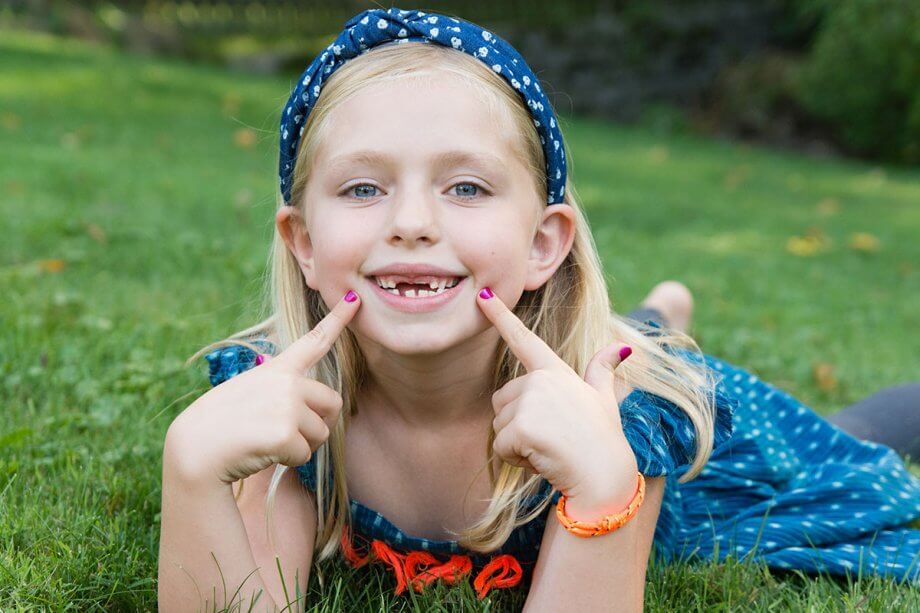Losing baby teeth is a highly personalized process, so it is important to stay calm if your child loses a tooth sooner or later than you expected. Some baby teeth fall out easily, while others take more time. Children tend to reflect their parents’ emotions, so it is important to treat the experience as a normal, happy occasion. Still, as a parent, you need to know whether your child is basically on track. Here is a general guide to what to expect.
Average Age
Most kids start to lose their baby teeth at age five or six, and it normally takes five to seven years for all the baby teeth to be replaced by permanent teeth. The wisdom teeth typically come in during the late teen years, often between the ages of 17 and 21.
The baby teeth usually come out in the same order that they came in. The bottom front teeth go first, followed by the top front teeth, and so on down the jawline in order. It is not unusual for kids who got their baby teeth early to lose them early, starting around age four. Kids who got their teeth late often lose them late, starting around age eight.
The Tooth Loss Process
Every child and every tooth is different. For the most part, though, the tooth will start to feel slightly wiggly a few weeks before it falls out. Over time, it will become looser and looser. Some baby teeth fall out on their own, while others need a bit of help.
Helping the Process
It is entirely normal for kids to play with their loose teeth, moving them around with tongues or fingers. This behavior helps the tooth roots let go, but warn your child not to pull hard on the tooth. Pulling it before it is ready can cause bleeding and pain, and put your child at risk for infection.
If the tooth is extremely loose, you or child can use very slight pulling pressure to remove it. Make sure to use clean hands or a piece of sterile gauze. If the tooth does not readily come out, wait several days before trying again.
Gum irritation and minimal bleeding are common when a baby tooth is lost. Apply pressure to the socket for a few minutes with sterile gauze. As long as you did not pull the tooth too soon, this bleeding should be slight and superficial. If bleeding does not stop in a couple of minutes, or if there is significant blood, keep gauze on the socket and call your dentist as soon as possible.
There is typically little to no pain, but some children prefer a soft diet for the rest of the day. Encourage your child to avoid chewing directly on the socket for a day or so.
Staying Healthy
It can be a little tricky, but it is important to keep up with regular oral hygiene throughout the tooth loss process. Keep an eye on your child’s brushing and flossing, especially if she/he seems squeamish about the tooth. Also keep up with your child’s regular dental appointments, as this allows the dentist to ensure that the permanent teeth are properly emerging.
Unusual Circumstances
Most of the time, a baby tooth falls out and is soon replaced by a permanent tooth. However, this process can get a bit out of sync. Sometimes permanent teeth emerge as a second row before the baby teeth come out, and sometimes a baby tooth falls out before the permanent tooth is ready. Keep your child’s dentist apprised of these conditions, as it may be necessary to use spacers or pull baby teeth to ensure that the permanent teeth have adequate space to properly emerge.
Want to Learn More?
If you are ready to start your child’s journey toward a lifetime of dental health, contact Andover Pediatric Dentistry today at 978-296-4964 (Andover office) or 978-682-3342 (Lawrence office).

